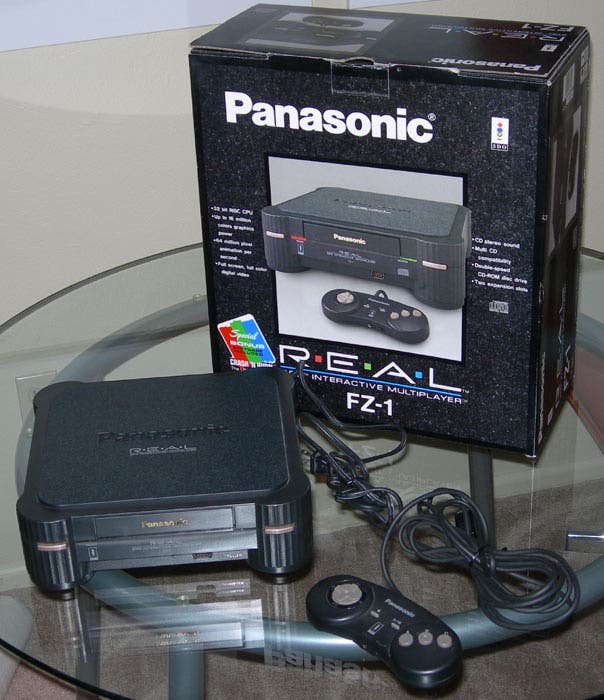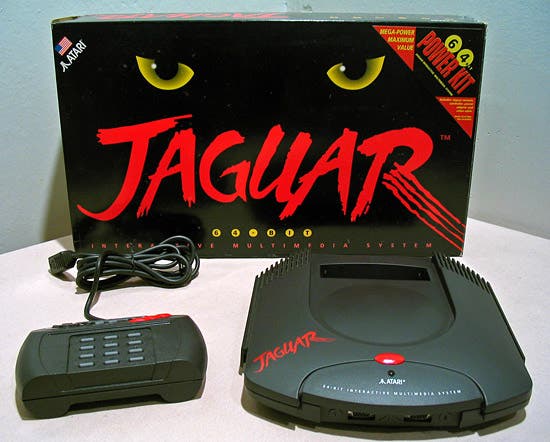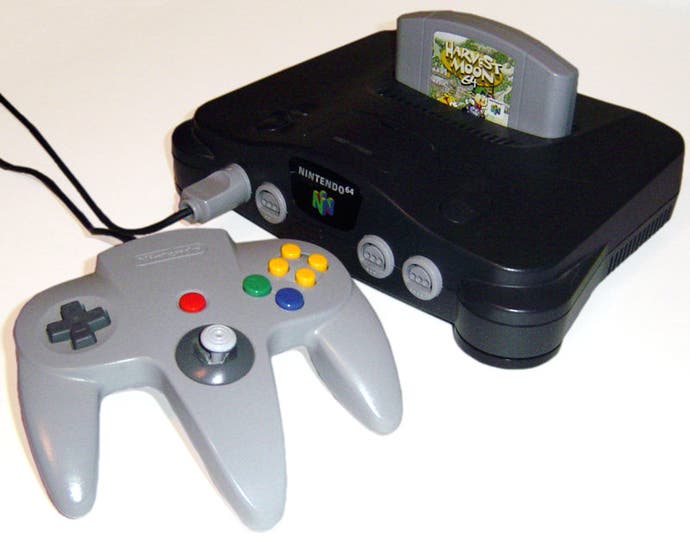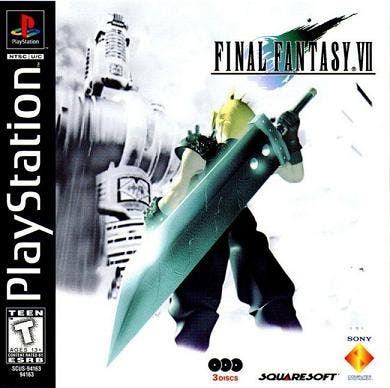PlayStation - The total history
Part 2: How Sony took over the world.
Catch up with the first and third parts of this series on the history of PlayStation.
Certainly, some of the PlayStation's success stemmed from the failures of its competitors. But it's only with hindsight that it becomes clear that the first wave of 'next-gen' consoles were a false start. The 3DO, for example, had launched before affordable floating point technology would make 3D graphics easier to produce. It was priced at a hefty $699 and hampered by a poor controller and odd business model that saw several manufacturers creating their own versions of the console. Atari's Jaguar had been similarly blighted by rubbish games and oddly-shaped controllers.
Nintendo's Ultra 64 - a collaboration with Hollywood darling, Silicon Graphics - showed much more promise than either of those two, but its launch was hampered by delays, and long-term sales were undermined by the low number of titles released for the console. So while it sold 300,000 units at its Japanese launch in 1996, and 500,000 over the weekend of its US launch, this level of success tailed off pretty quickly. And while Sony's relatively high royalty rate (of about £9 per unit sold) might have annoyed some developers, it was still cheaper than the cost of manufacturing cartridges for Nintendo's console.
One industry pundit has even pointed to the ease with which Sony's new format could be pirated as a crucial ingredient in the console's success - not a theory that's easy to verify, but certainly an interesting argument. What is certain is that it was the perceived superiority of Sony's CD-ROM format over Nintendo's carts that inspired Square's Hironobu Sakaguchi to switch allegiance from Nintendo to the PlayStation. Final Fantasy VII was the first Japanese RPG to crack the US and UK markets, and it did so with aplomb, becoming the biggest-selling game of 1997 and eventually shifting over six million copies.

Equally important was the failure of the Saturn. While Sega's console did perform reasonably in Japan, Sega apparently overstated the number of units that actually reached the hands of consumers, quoting the number of units that had been shipped to retailers as sales figures. Outside Japan, the Saturn had been hamstrung by confusion over the introduction of the Mega Drive add-on, the 32X, and the console's dual processor made it difficult to program (and was, in any case, allegedly a rushed attempt to match the PlayStation after Sony's specs had leaked, a year earlier).
The result was that in 1997, Sony had 46% of the US next-gen market, while Nintendo had 40%, and Sega just 12%. When the Saturn was discontinued, in 1998, it had sold 2 million units in the US, compared to 10.75 million PlayStations. It was all too clear that multiformat games, such as Mortal Kombat Trilogy, were just better on the PlayStation.
And that was the real reason for the console's success: Sony's hardware was simply unparalleled when it launched. In 1995, Edge magazine described the PlayStation as 'unquestionably the most powerful collection of electronic gadgetry ever assembled for home use". The console had seen Sony outhinking the competition. Before it launched there was no real widespread perception that 3D games were to be the way forward for the industry. Companies such as Sega, 3DO, Atari, and SNK, were all focused on the 2D capabilities of their consoles, with only Sega's coin-op games Virtua Racing and Virtua Fighter providing an untextured glimpse of the future.

By contrast, Sony produced a platform that would inspire an industry-wide paradigm shift. While the original PlayStation's R3000 processor operated at a fairly average 33MHz, Ken Kutaragi had designed custom hardware, included a Graphics Processing Unit, that was optimised for 3D graphics processing and unprecedented audio playback. It was relatively easy to program, because Sony provided decent development tools, and because it had one processing chip with a 3D geometry engine in the CPU. And the console's controller was equally groundbreaking, with an amazing ten buttons comfortably incorporated into an oddly-shaped design which still forms the basis of PlayStation controllers.
Significantly though, all that revolutionary hardware made it possible to create an amazing selection of games. And that, in the end, is what it always boils down to. Although it didn't have a first class in-house development team, Sony convinced third-party publishers to use its incredible technology to produce a stunning variety of software. Looking back some years after the console's launch, former president and CEO of SCE, Teruhisa Tokunaka said: "Sony's relationship with thirdparty developers has been a key element in the PlayStation's success." It certainly had been.
Early partnerships with the likes of Konami and Namco, and the use of PlayStation hardware as the basis for coin-op motherboards saw, for the first time, arcade-quality gaming transferred to the living room. Namco's Ridge Racer accompanied the Japanese launch of the console and was an amazing advert for the power of the PlayStation. Converted in under six months at a cost of around £15,000, it was a perfect conversion of coin-op technology, back when coin-op technology was seriously powerful. It was followed up with Tekken, which was a similar arcade-perfect port, before another perennially popular PlayStation series was born from this synergy between coin-op and console: Konami's J-League Winning Eleven.

Other early titles like Toh Shin Den and Jumping Flash showed promise but are now largely forgotten, eclipsed by subsequent generations of software that appealed to a widening audience of gamers. Indeed Sony was given a lot of retrospective credit for producing software and marketing that resonated with the late 90s rave generation. But on the eve of the PS2 launch, Sony's Alan Welsman pointed out that putting games into clubs had originally been Sega's idea: "What happened was games became acceptable - 50 per cent through Sony and 50 per cent natural dynamics of the consumer changing. It was happening anyway."
Nevertheless, Sony's software played no small part in accelerating the rate of change. Wipeout's packaging was created by The Designers Republic, and its licensed track listing was a direct appeal to club-goers (before licensed track listings were at all common - another advantage of Sony's CD-ROM technology). But it was the diversity of Sony's software that was it's strongest suit - while the Nintendo 64 was home to some of the best-selling games, PlayStation was home to more best-selling games. Tomb Raider appeared first on Sega's Saturn, but quickly became synonymous with Sony hardware.
And every year there was seemingly another million-seller to keep driving hardware sales: Final Fantasy VII, Metal Gear Solid, Gran Turismo. Indeed it's difficult, today, to recall the paradigmatic impact of Polyphony's racer, which broke from the traditions of arcade handling models and just a handful of car types. Its physically realistic handling model and comprehensive vehicle roster was every petrolhead's dream. But the PlayStation catered for every demographic, from the mature horror fan, with Resident Evil, to the family audience with the likes of Crash Bandicoot - and there were even arty curios like Parappa the Rapper, and import niches like Konami's BeMani games.

Indeed Sony's commitment to wide-ranging creativity and new ideas was consistent throughout the life of the PlayStation. Nintendo 64's innovative controller was shamelessly plundered to pave the way for the DualShock analogue controller, and the console was supported by a huge number of peripherals, from lightguns to driving wheels, and even an equivalent of the Dreamcast's VMU unit, the Pocket Station (which was only released in Japan).
Meanwhile the Net Yaroze enterprise marked a surprising commitment to originality that is often forgotten by the company's critics. Another brainchild of Ken Kutaragi, the Net Yaroze was essentially a cut-down dev kit. £550 got would-be games programmers a modified black (region-free) PlayStation, a serial cable to connect to a PC, a C compiler, development libraries, code examples, and access to a support site. Many coders who cut their teeth on the system ended up in the industry, such as George Bain and James Russell who went on to join SCEE itself. It was an enterprise that would pave the way for the inclusion of Yabasic with the UK launch of the PlayStation 2, and the launch of Linux on for Sony's second console.
Not that the eventual appearance of PlayStation 2 diminished the continued success of the original PlayStation. It was eventually repositioned as the PSone, but actually the evolution had been ongoing. Over the course of various incremental revisions, the 1000 series turned into the 3000 series, then the 5000, 7000, 7500 and 9000 series. Each new iteration featured a more integrated chipset (and regrettably fewer sockets at the back) reducing the manufacturing cost to grant the console an unprecedented longevity.
In the year of the PlayStation's launch, 3DO head Trip Hawkins said, at E3, "For a company that is so new to the industry, I would have hoped that Sony would have made more mistakes by now." By the time Sony announced the end of PlayStation production, on March 23, 2006, Sony hadn't made many more. 100 million units sold is testament to that. It was the first console ever to do sell in such numbers.







